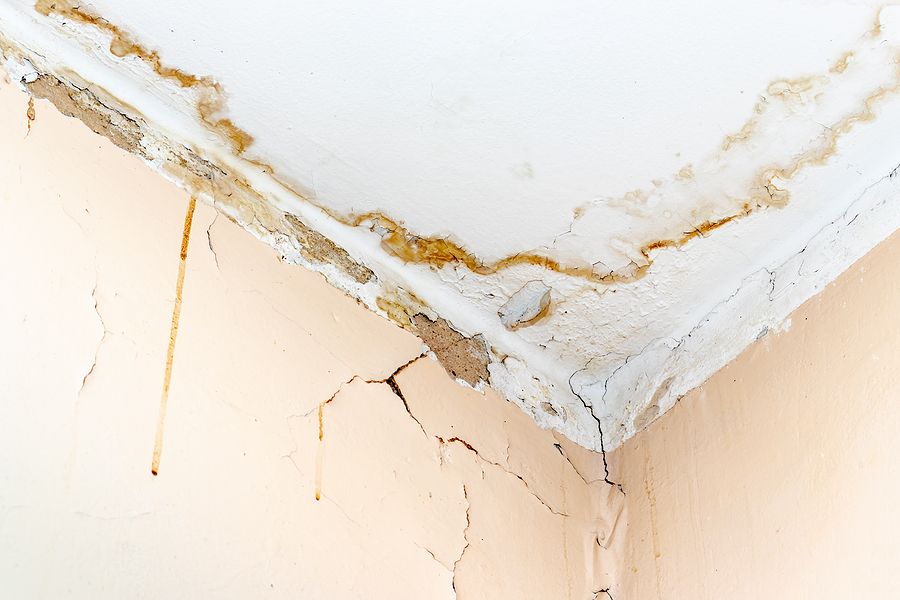We've stumbled upon this post pertaining to How to detect water leaks in your home directly below on the net and decided it made good sense to write about it with you on my blog.

Leakages not only cause waste of water yet can also cause unneeded damages to your house as well as advertise undesirable natural growth. Sadly, water leaks might go undetected considering that most of the pipework in our house is concealed. By looking as well as comprehending for daily situations that create leakages, you can secure your house from future leaks as well as unneeded damage. Today, we will certainly look at six leakage creates that might be causing your pipes to trickle.
Elbowing in roots
A lot of water leakages begin outside the residence instead than inside it. You may notice damp spots or sinkholes in your lawn, and that may imply that tree roots are attacking water lines triggering water to leak out.
Rusty water systems
As time passes by, your plumbing system ages as well as deterioration such as rust may begin eating away the pipelines. This might be the root cause of staining or warping on your pipes. This requires an assessment with your plumber promptly. Think about changing the pipelines since they are at a greater risk of deterioration than the more recent models if our plumbing system is old.
Malfunctioning Pipeline Joints
The point at which your pipelines connect is regularly the weakest link in the waterline. Pipeline joints can deteriorate gradually, leading to water leakages. Unfortunately, most of pipe joints are not quickly visible. If you have loud pipelines that make ticking or banging noises, specifically when the warm water is switched on, your pipe joints are most likely under a great deal of pressure. It is suggested to have your plumber evaluate your system annually.
Instantaneous temperature modifications.
Extreme temperature level changes in our pipelines can cause them to broaden and acquire suddenly. This growth and also tightening might cause fractures in the pipelines, specifically if the temperature are below freezing. If you kept an eye on exactly how your plumbing works, it would be best. The presence of the formerly mentioned circumstances regularly shows a high threat.
Poor Water Connectors
At times, a leakage can be brought on by loosened hose pipes as well as pipes that supply your home appliances. Usually, moving is what triggers the loose water Links. You might find when it comes to a cleaning equipment, a tube may spring a leak as a result of drinking throughout the spin cycle. In case of a water links leakage, you may notice water running straight from the supply line or puddles around your devices.
Obstructed Drains
Obstructed drains might be bothersome and also inconveniencing, yet they can often end up triggering an overflow causing break pipes. Maintain removing any kind of materials that may decrease your drains pipes that might obstruct them to avoid such troubles.
All the above are root causes of leakages however not all water leaks arise from plumbing leakages; some leaks could originate from roof leaks. All leaks should be repaired right away to stay clear of water damages.
Leakages not just create waste of water yet can additionally cause unnecessary damages to your residence and also promote unwanted organic development. By looking as well as understanding for daily circumstances that trigger leaks, you can protect your house from future leakages as well as unnecessary damages. Today, we will certainly look at 6 leak causes that might be creating your pipes to trickle.
At times, a leakage can be triggered by loosened tubes and also pipelines that supply your devices. In case of a water links leak, you might discover water running directly from the supply line or pools around your appliances.
How To Check For Water Leak In Your Home
How To Check for Leaks
The average household's leaks can account for nearly 10,000 gallons of water wasted every year and ten percent of homes have leaks that waste 90 gallons or more per day. Common types of leaks found in the home are worn toilet flappers, dripping faucets, and other leaking valves. These types of leaks are often easy to fix, requiring only a few tools and hardware that can pay for themselves in water savings. Fixing easily corrected household water leaks can save homeowners about 10 percent on their water bills.
To check for leaks in your home, you first need to determine whether you're wasting water and then identify the source of the leak. Here are some tips for finding leaks:
Take a look at your water usage during a colder month, such as January or February. If a family of four exceeds 12,000 gallons per month, there are serious leaks.
Check your water meter before and after a two-hour period when no water is being used. If the meter changes at all, you probably have a leak.
Identify toilet leaks by placing a drop of food coloring in the toilet tank. If any color shows up in the bowl after 10 minutes, you have a leak. (Be sure to flush immediately after the experiment to avoid staining the tank.)
Examine faucet gaskets and pipe fittings for any water on the outside of the pipe to check for surface leaks.
Undetected water leaks can happen without the home or business owner even realizing. If you suspect a water leak, but not able to find the source. It is time to contact a professional water leak detection service, The Leak Doctor.
How To Find a Water Leak In Your Home
https://www.leakdoctor.com/blog/How-To-Check-For-Water-Leak-In-Your-Home_AE197.html

I am very occupied with Common Water Leaks In House and I hope you enjoyed reading my article. For those who enjoyed reading our article kindly do not forget to share it. We treasure reading our article about Most Common Causes of Leaky Pipes.
Protect your property; contact now.